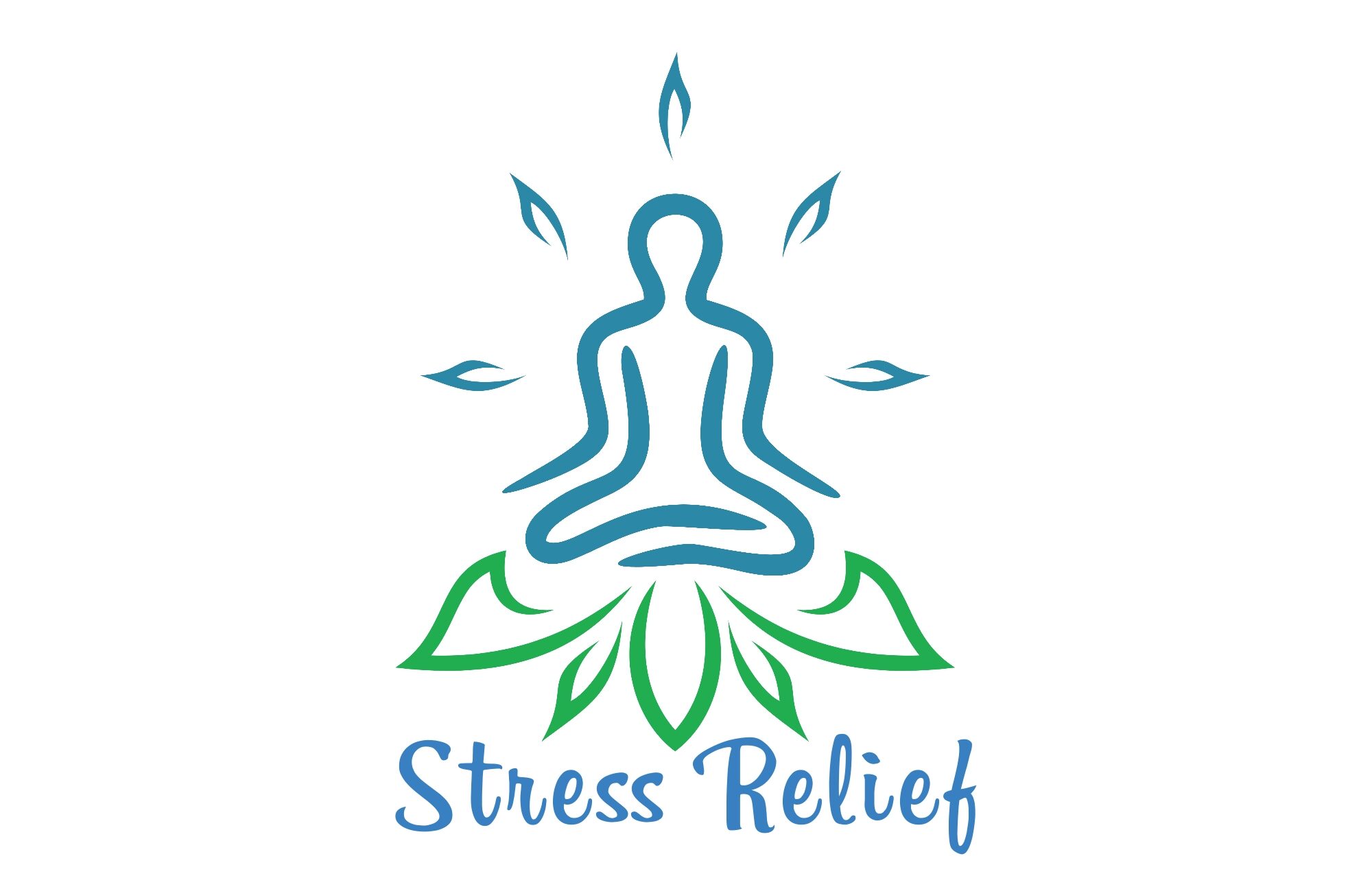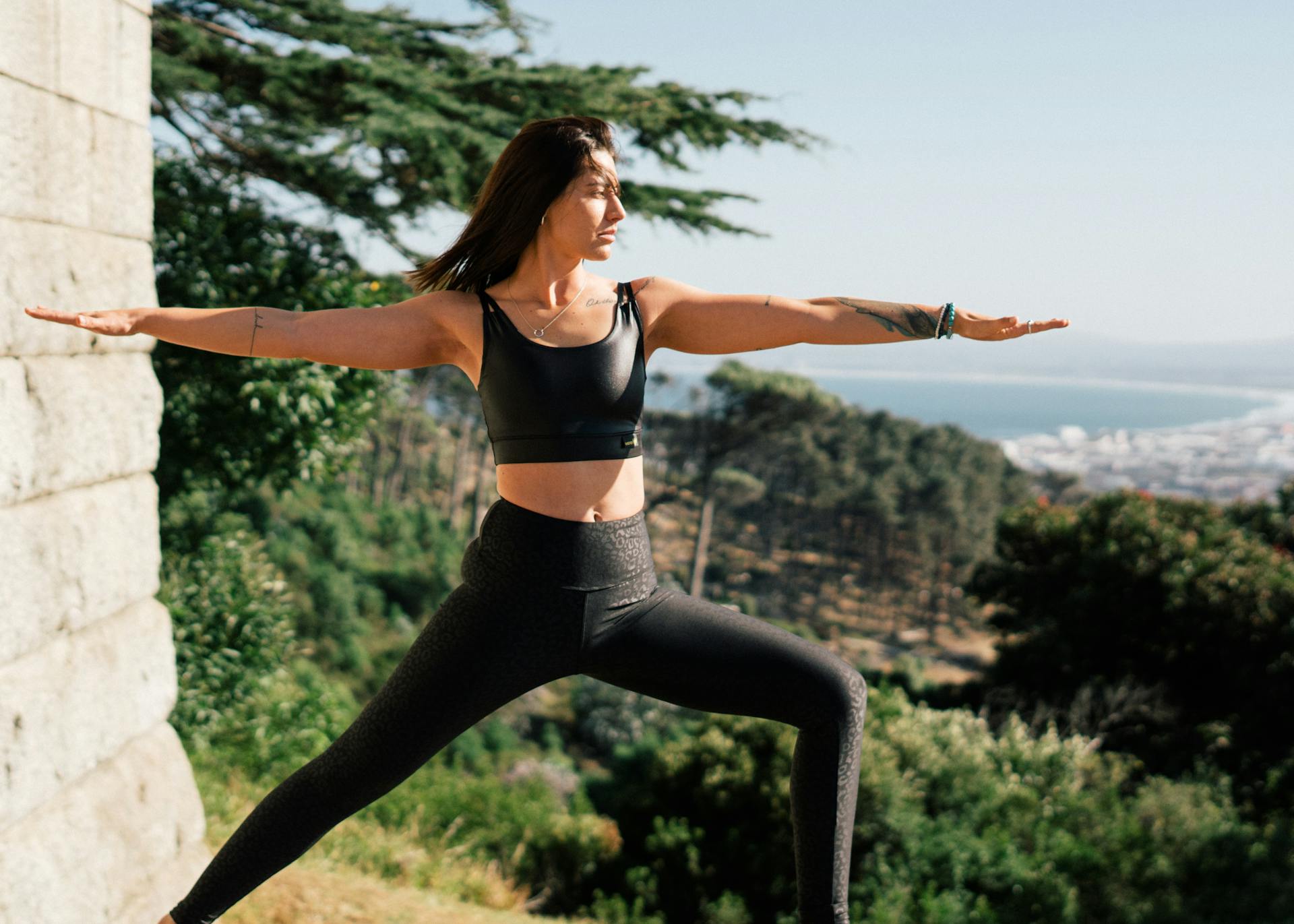I. Introduction to Morning Stress Relief Exercises
Starting your day off with a positive and energized mindset sets the tone for a stress-free day ahead. Incorporating morning stress relief exercises into your routine can be the perfect way to achieve this. By dedicating a few minutes each morning to stretching, yoga, cardio, and mindfulness techniques, you can effectively reduce stress and boost your overall well-being.
Understanding the Importance of Morning Routine for Stress Relief
Setting aside time for a morning routine is essential for relieving stress. In the early hours of the day, our minds are fresh and ready to absorb positive energy. By engaging in stress relief exercises, you provide yourself with an opportunity to center your thoughts, release tension from your body, and prepare yourself mentally for the challenges that lie ahead.
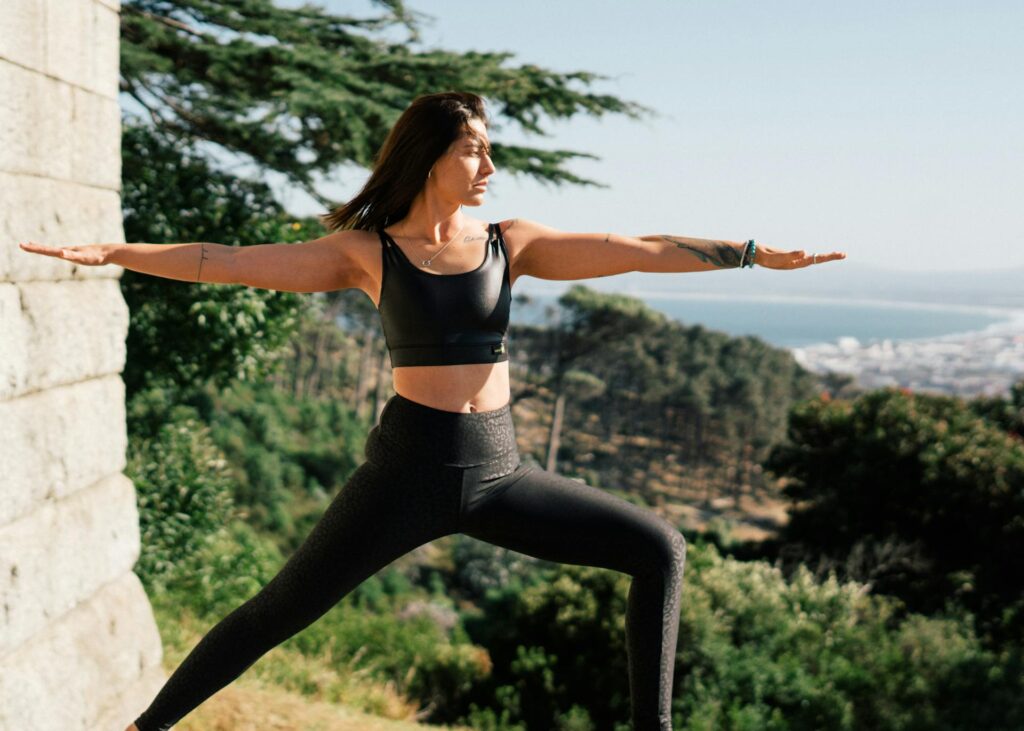
Benefits of Incorporating Exercises into Your Morning Routine
The benefits of adding exercises to your morning routine extend beyond stress relief. Regular exercise in the morning can increase your energy levels, improve mood, and enhance cognitive function throughout the day. It helps increase blood circulation, release endorphins, and boost metabolism, leaving you feeling refreshed and ready to take on the day.
Setting a Positive Mindset for the Day
Positive affirmations and mindset setting are crucial components of an energizing morning routine. By starting your day with a positive mindset, you cultivate an environment of self-belief and resilience. Embrace positive thoughts, visualize success, and set intentions for a fulfilling day.
II. Head-to-Toe Stretching Exercises
Stretching exercises are an excellent way to awaken your body and release any tension built up overnight. Include these head-to-toe stretching exercises in your morning routine to prepare your muscles for the day ahead:
Neck Stretches for Relieving Tension
Gently tilt your head to the left, bringing your left ear towards your left shoulder. Hold for a few seconds, then repeat on the right side. This stretch helps alleviate tension in the neck and upper back, which often builds up during sleep or after a long day of work.
Shoulder Stretches to Loosen Tight Muscles
Roll your shoulders forward and backward in a circular motion several times. This simple exercise helps loosen tight muscles and promotes better posture throughout the day. You can also interlace your fingers behind your back and gently lift your arms to stretch the chest and shoulders.
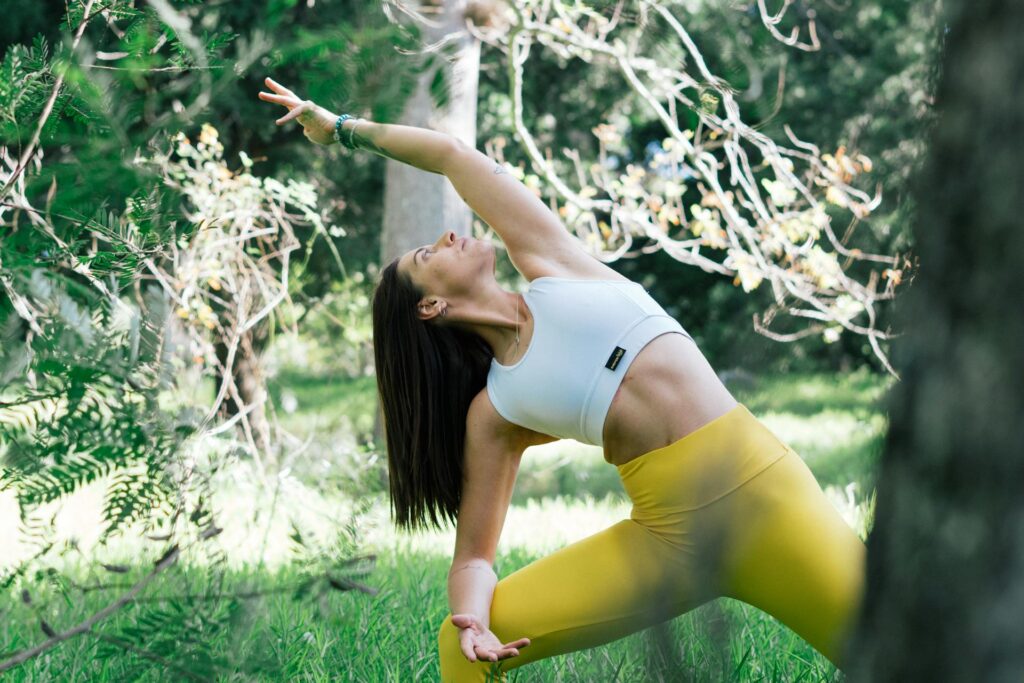
Back Stretches for Improving Flexibility
Lie on your back and bring your knees to your chest, hugging them with your arms. This gentle spinal stretch helps improve flexibility and releases tension from the lower back. Remember to breathe deeply and relax into the stretch.
Hip Stretches to Release Stress from Sitting
Cross one ankle over the opposite thigh and gently press down on the knee of the crossed leg. You will feel the stretch in your hip and glute muscles. Switch to the other leg to ensure both sides are equally stretched. This exercise is especially beneficial if you spend long hours sitting at a desk.
Leg Stretches for Promoting Blood Circulation
Stand with your feet hip-width apart and slowly bend forward to touch your toes. If you can’t touch your toes, reach as far as you comfortably can. This stretch helps promote blood circulation in the legs and releases any tightness in the hamstrings and calf muscles.
III. Energizing Yoga Poses
Yoga is a fantastic way to combine stretching, strength-building, and mindfulness into one holistic practice. The following energizing yoga poses will awaken your body and mind, leaving you feeling invigorated and ready to conquer the day:
Sun Salutation Sequence to Awaken the Body and Mind
The Sun Salutation, also known as Surya Namaskar, is a dynamic sequence that combines several yoga poses. Here is a breakdown of the sequence:
- Mountain Pose (Tadasana): Stand tall with your feet grounded, shoulder-width apart. Reach your arms overhead, palms facing each other. This pose helps ground and center your energy.
- Upward Salute (Urdhva Hastasana): Inhale and lift your arms up, lengthening your spine and stretching your entire body. This pose helps stretch the spine and increase flexibility.
- Forward Fold (Uttanasana): Exhale and fold forward, bringing your hands to the ground or reaching for your shins. Let your head hang and release tension in the back and hamstrings.
- Plank Pose (Phalakasana): Step or jump back into a high plank position, ensuring your shoulders are stacked above your wrists. Engage your core and hold this pose for a few breaths to build core strength.
- Downward Dog (Adho Mukha Svanasana): Push back into an upside-down “V” shape, with your hands and feet grounded. Lengthen your spine, press your heels towards the ground, and engage your upper body. This pose helps invigorate the entire body.
- Cobra Pose (Bhujangasana): From a low plank position, lower your body down, keeping your elbows close to your sides. Lift your chest off the ground, using your back muscles, and look up. This pose opens the chest and improves posture.
- Child’s Pose (Balasana): Sit back on your heels and fold forward, resting your forehead on the ground. This relaxing pose helps calm the mind and release tension in the body.
Tree Pose (Vrikshasana) for Stability and Focus
Stand tall and bring one foot to rest on the inside of the opposite leg. Find your balance and bring your hands together at your heart center. This pose strengthens the legs, improves balance, and cultivates focus and stability.
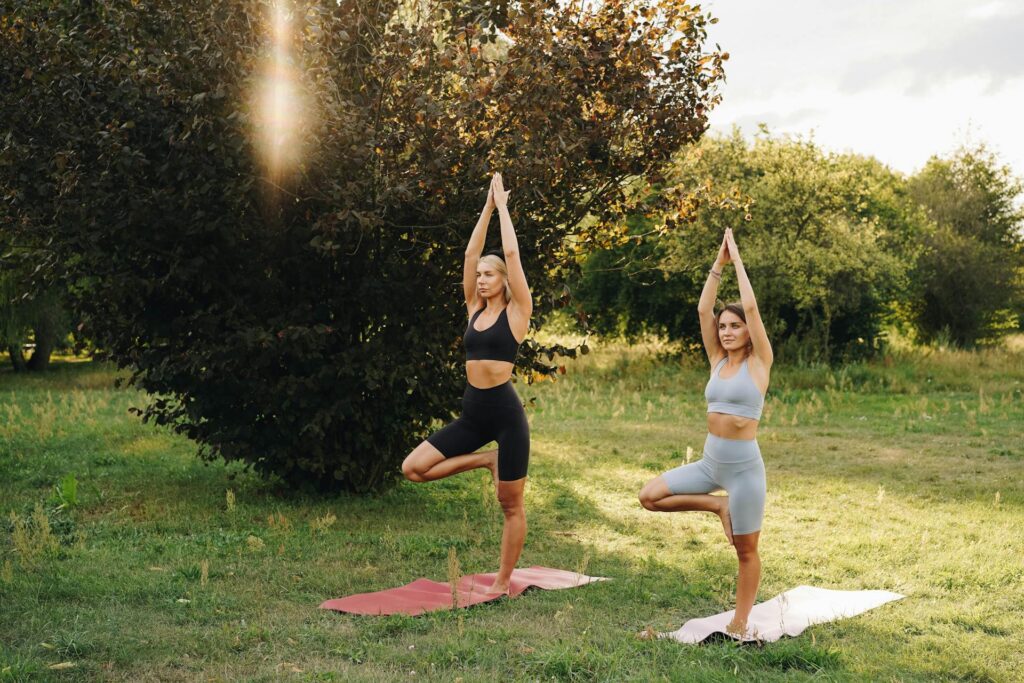
Warrior II (Virabhadrasana II) to Boost Energy Levels
Step your feet wide apart, turn one foot out to the side, and bend your front knee. Extend your arms parallel to the ground, keeping your gaze over your front hand. Warrior II pose strengthens the legs, opens the chest, and boosts energy levels.
IV. Cardiovascular Exercises
Cardiovascular exercises in the morning increase blood circulation, elevate heart rate, and provide a burst of energy. Include these exercises in your routine for an invigorating start to the day:
Jumping Jacks to Get the Blood Flowing
Start with your feet together and arms by your sides. Jump up, spreading your legs wide apart and raising your arms overhead. Jump back to the starting position and repeat. Jumping jacks engage multiple muscle groups and get your blood flowing.
High Knees for a Full Body Warm-up
Stand with your feet hip-width apart and bring your knees up towards your chest, alternating between legs in a running motion. This exercise warms up the entire body and boosts energy levels.
Running or Jogging in Place for Increased Heart Rate
If you have enough space, jog or run in place for a few minutes. This simple exercise increases your heart rate, strengthens your cardiovascular system, and releases endorphins.
Skipping Rope for a Fun and Effective Cardio Workout
Grab a skipping rope and start jumping, aiming for a consistent pace. Skipping rope is a great way to enhance coordination, burn calories, and increase cardiovascular fitness.

Burpees to Engage Multiple Muscle Groups and Elevate Energy Levels
Begin in a standing position, then drop into a squat and place your hands on the ground. Jump or step both feet back into a high plank position, lower yourself into a push-up, then explosively jump or step your feet back towards your hands and stand up. Burpees engage your entire body and boost energy levels.
V. Mindfulness and Deep Breathing Techniques
Incorporating mindfulness and deep breathing techniques into your morning routine can help calm the mind and reduce stress. Try the following techniques to achieve a state of relaxation and mental clarity:
Practice Deep Belly Breathing for Relaxation
Sit comfortably with your eyes closed and place one hand on your belly. Inhale deeply through your nose, allowing your belly to expand. Exhale slowly through your mouth, feeling your belly deflate. Deep belly breathing helps activate the relaxation response and reduces tension.
Incorporate Mindfulness Meditation for Mental Clarity
Find a quiet space and sit comfortably. Close your eyes and bring your attention to your breath. Notice the sensation of each inhale and exhale, without judgment or attachment. Allow thoughts to come and go, bringing your focus back to your breath. Mindfulness meditation cultivates mental clarity and promotes a sense of presence.
Counting Breaths to Regulate the Nervous System
Sit or lie down comfortably and close your eyes. Take a deep breath in and slowly exhale. Begin counting your breaths, inhaling for a count of four and exhaling for a count of four. Gradually increase the count to six or eight as you become more comfortable. Counting breaths helps regulate the nervous system and promotes relaxation.
Incorporating Affirmations to Cultivate Positivity
As part of your morning routine, repeat positive affirmations to yourself. Choose statements that resonate with you, such as “I am calm and capable,” “I embrace challenges with confidence,” or “I am grateful for the opportunities today brings.” Affirmations help reframe negative thoughts and cultivate positivity.

Progressive Muscle Relaxation for Relieving Tension
Lie down in a comfortable position and begin by tensing and releasing each muscle group in your body, starting from your toes and working your way up to your head. This practice helps promote deep relaxation and release tension from your body.
VI. Conclusion
Incorporating energizing morning stress relief exercises into your routine is a powerful way to start your day on a positive note and reduce stress. The combination of head-to-toe stretching exercises, energizing yoga poses, cardiovascular exercises, and mindfulness techniques provides a holistic approach to enhance your physical and mental well-being.
By dedicating just a few minutes each morning to these exercises, you can boost your energy levels, release tension, and set a positive mindset for the day ahead. Remember to personalize your morning routine according to your preferences and fitness level for optimal results.
VII. Frequently Asked Questions (FAQs)
Can I do these exercises if I’m not a morning person?
Absolutely! These exercises can be performed at any time of the day. However, doing them in the morning allows you to start your day on a positive and energized note.
How much time should I allocate for morning stress relief exercises?
The amount of time will depend on your schedule and preferences. Ideally, aim for at least 15-30 minutes to fully benefit from these exercises.
Is it necessary to warm up before starting these exercises?
While it’s not mandatory, warming up your muscles with a few minutes of light movement or stretching can help prevent injury and enhance the effectiveness of the exercises.
Can I modify the exercises to suit my fitness level?
Absolutely! Listen to your body and modify the exercises as needed. You can adjust the intensity, duration, or repetitions according to your fitness level and any physical limitations you may have.
Can I combine multiple exercises from different sections?
Yes, you can mix and match exercises from different sections to create a routine that suits your needs. Experiment with different combinations to find what works best for you.
Remember, implementing these energizing morning stress relief exercises into your routine can make a significant difference in your overall well-being. Start your day with positivity, energize your body, and cultivate a stress-free mindset to embrace each day to its fullest potential.
